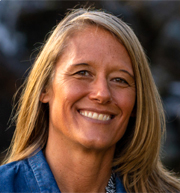
President's Letter: Flipping the Traditional Model of Postsecondary Planning
By Terri Tchorzynski | November 2023
 Several years ago, I had the opportunity to hear Dr. Kevin Fleming speak at a conference and he asked a question of all attendees that still resonates with me today. He asked, “In what order did you make the following life decisions: college/university, career and major?” I was affirmed, and slightly embarrassed, as the majority of attendees chose the same order as me: college/university, major and then career. This was the order in which I had guided my students up to that point to make these important life decisions and, unfortunately, this order did not prioritize the ultimate goal of finding a college/university that best aligns to future career plans.
Several years ago, I had the opportunity to hear Dr. Kevin Fleming speak at a conference and he asked a question of all attendees that still resonates with me today. He asked, “In what order did you make the following life decisions: college/university, career and major?” I was affirmed, and slightly embarrassed, as the majority of attendees chose the same order as me: college/university, major and then career. This was the order in which I had guided my students up to that point to make these important life decisions and, unfortunately, this order did not prioritize the ultimate goal of finding a college/university that best aligns to future career plans.In Fleming’s short video, Flipping the College Decision-Making Paradigm, he goes on to talk about how this traditional sequence does not always serve all of our students well and has the potential to result in students leaving their postsecondary education before they finish – leaving them with financial debt instead of a degree. So . . . how do we as school counselors frame our conversations with students so they are set up to make future decisions that are better aligned to ensure postsecondary success?
Fleming suggests encouraging students to first enter into their postsecondary education with an identified career path. Notice, I mentioned “career path,” not a specific career. With the ever-evolving economy, it is difficult to know all of the careers that our future might hold but we can be certain that specific career pathways will remain. Think of your own journey. You may have had various professional titles, but you probably remained in the same pathway.
Second is to identify an informed major or training program. I remember foolishly being well into my sophomore year of college when I was tasked with the responsibility of declaring my major. Thankfully, it all worked out for me but I can promise you some of my thinking around that major circulated around what my friends were majoring in and which major I could complete the fastest. Did any of you base that important decision around those factors as an 18- or 19-year-old? I anticipate that I was not alone in that decision-making process.
Last is to then identify a skills-based education plan that would include the appropriate postsecondary institution that would align to future goals. Notice that this comes last, but is often the first question we ask: “What college/university do you plan to attend?”
There is no doubt that these future decisions around postsecondary planning can be the most exciting, overwhelming and stressful for both students and families, but also the most pertinent. Whether we are at the elementary level establishing the foundation of postsecondary opportunities, at the middle school level solidifying Educational Development Plans that will help align the course for future goals, or meeting with high school students who are about to venture into these life-altering decisions, let’s ask ourselves, “In which order should these life decisions be made that will establish the right priorities for postsecondary success?”
Contact Terri Tchorzynski, Michigan School Counselor Association president, at ttchorzynski@gmail.com.